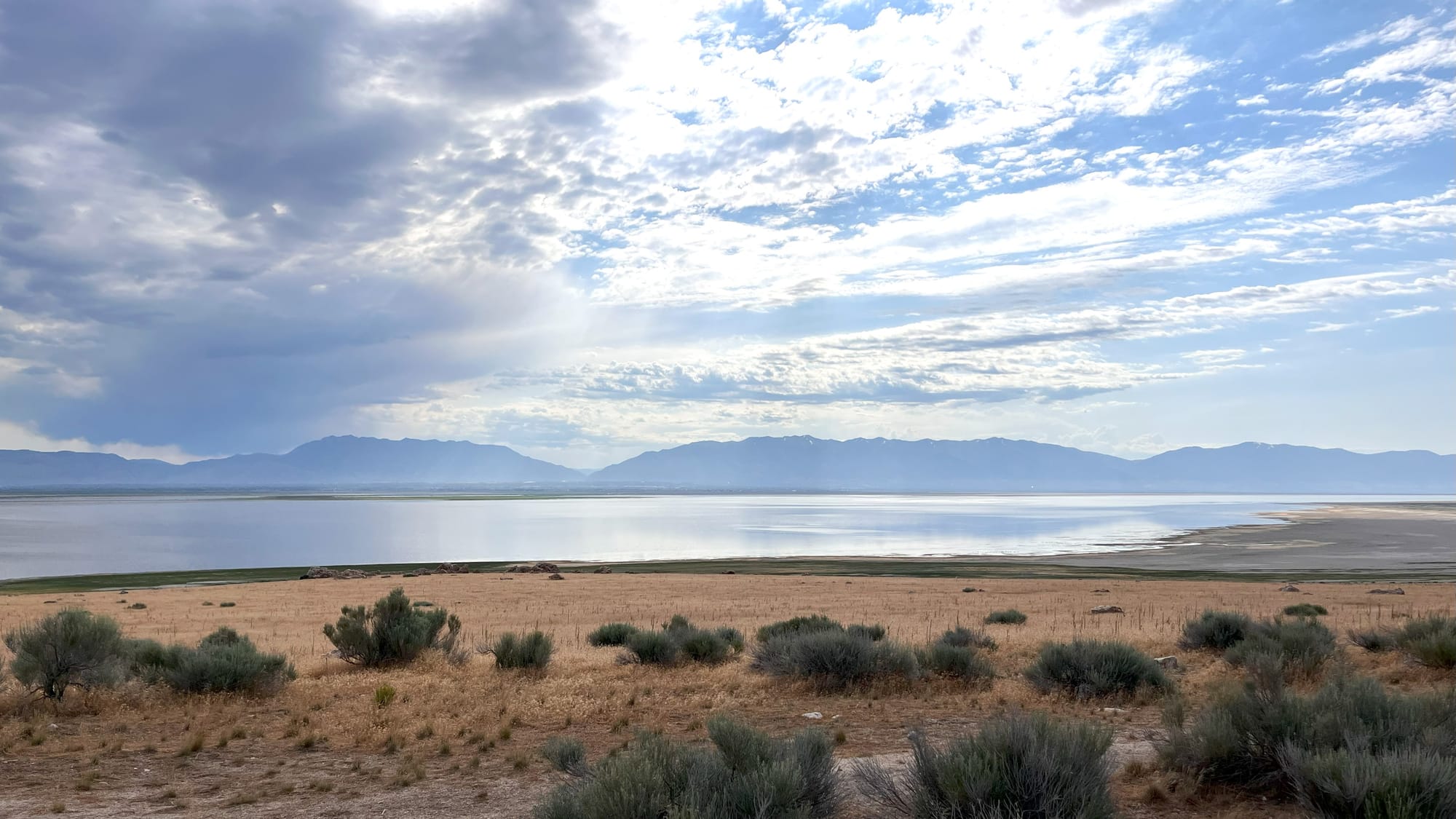
After crossing Great Salt Lake via a 7-mile causeway, I pulled up to the entrance station of Antelope Island State Park, and was greeted by a handwritten sign taped to the side of the booth that read “No refunds due to insects.” Laughing, I asked the attendant if that was really a thing people asked for. “You’d be surprised,” they replied.
It turns out the 28,022-acre island’s marshy areas make great insect breeding grounds, and the waste from the island's namesake and other wildlife provides an ample food source. I had pulled up on the 4th of July, as the prime season for biting gnats was beginning to wind down, and the brine flies started to emerge. But if you prepare and plan your visit right, the bugs shouldn’t stop you from exploring this amazing microcosm of nature.
It has, in fact, left me perplexed about how to organize it in this publication's typical Beach, City, Desert, or Mountain categories. Its highest point is 6,589 feet above sea level, but it’s not part of either of the two nearby mountain ranges. There are rocks there older than the rocks at the bottom of the Grand Canyon, but it isn’t a desert canyon. It lies in the southeastern portion of Great Salt Lake, so it is somewhat near, but also a world away from Salt Lake City. It also offers white sand beaches that beckon sunbathers and swimmers who want to float in the salty water that surrounds it.
But what I opted to do on my half day on the island was an easy hike with my senior dog, and a visit to the Fielding Garr Ranch site. So the first stop was the visitor center, where I always like to get a ranger’s recommendation on what trail to choose. Dogs are welcome on the trails on leash, but they suggested we might want to head to a part of the island away from the bison herd to avoid potential conflict.
Yes, while there are about 200 of the island’s namesake antelope living there today, it is also home to Utah’s largest free-roaming bison herd, from 500-700 depending on the time of year. In the late 1800s, when America’s population of bison was dwindling, 12 were brought to the island, with more commercial than conservation plans in mind. But the herd grew and even got a Hollywood moment when they played a role in the 1923 silent film The Covered Wagon. Today, they are a valuable genetic pool for bison breeding and conservation purposes.
I’ve seen enough warnings against trying to “pet the fluffy cows” and stories about what happens when people don’t heed them, to not question the ranger’s advice to avoid the herd. We chose instead an easy loop trail around Buffalo Point and were about halfway when we rounded a curve and noticed a big black boulder on the edge of the trail. Only it wasn’t a boulder, it was a single sleeping bison. I froze. Debated whether to go off-trail and try to walk around him. But just how far is far enough away to walk around? What would happen if my dog decided to bark at him? Ultimately, I decided that our loop trail had just turned into an out-and-back, and we reversed our course after a quick, far-away photo.
So we returned to the car and drove up Buffalo Point for the scenic view before driving down to the other end of the island to check out the ranch.
Artifacts discovered on Antelope Island indicate that it was frequented by prehistoric peoples more than 6,000 years ago. But the first known permanent structure on it was a small log cabin built in 1848 by Fielding Garr, soon after the island was mapped and given its current name because of the North American antelope (technically pronghorn) that were abundant on it. Garr was assigned by the Church of Jesus Christ of Latter-day Saints to establish a ranch on the island.
At one point, the island supported 600-800 head of cattle, and herds of sheep would be moved through there for a rest stop between their summer and winter grazing ranges. It eventually moved from Church ownership to private hands, fluctuating between cattle and sheep ranching, until it became a state park in 1981.
The ranch house still stands and is the oldest Mormon-built home that is still on its original foundation in Utah. We wandered around the house and peeked inside, where different rooms are furnished as they would have been in different eras of the ranch. There’s a 1970s-style kitchen, a 1940s-style dining room, and several 1840s-style bedrooms.
Also on the property are structures such as a blacksmith shop, a bunkhouse for workers, a grain silo, and corrals where we found a small herd of horses - because even today, the park uses mounted riders to move the bison herd into corrals each fall for veterinary attention. Around this time, some of the bison (around 200 each year) are also sold at a public auction to keep the herd within the island's carrying capacity.
It’s an interesting peek into the world of ranching past and present. But, it’s also the area where we encountered the most of those insects we’d been warned about because of the marshy areas nearby. I noticed the horses seemed to have worked out a system where they would stand side-by-side, but head to tail, so as they swished flies away from their own hindquarters, they were doing the same for their partner's face.
They couldn’t request a refund from the park; they just adapted to their surroundings. And I didn’t have any reason to want a refund because we’d definitely enjoyed our time visiting the park’s flora and fauna, both wild and domesticated.
If you head to Antelope Island, I hope you aren’t one of those people driven out by the insects either. Instead, take this bit of advice:
- Pack your bug spray,
- Plan hikes and beach time for midday when the bugs are less active,
- Maybe buy one of the net hats they sell at the gift shop, and…
Remind yourself that the bugs are a vital food source for millions of migratory birds that visit the lake each year. They’re just doing their part for the ecosystem.
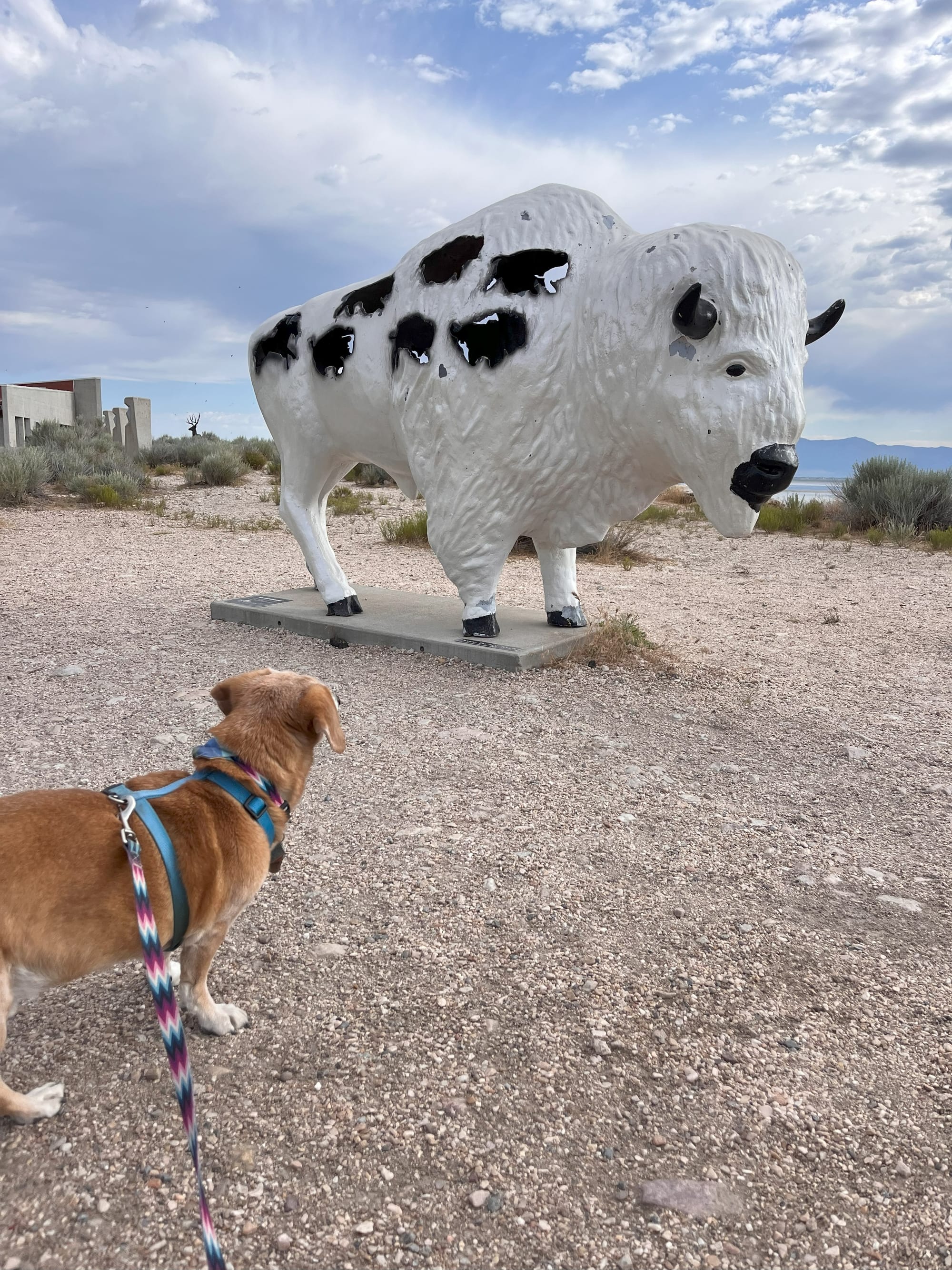
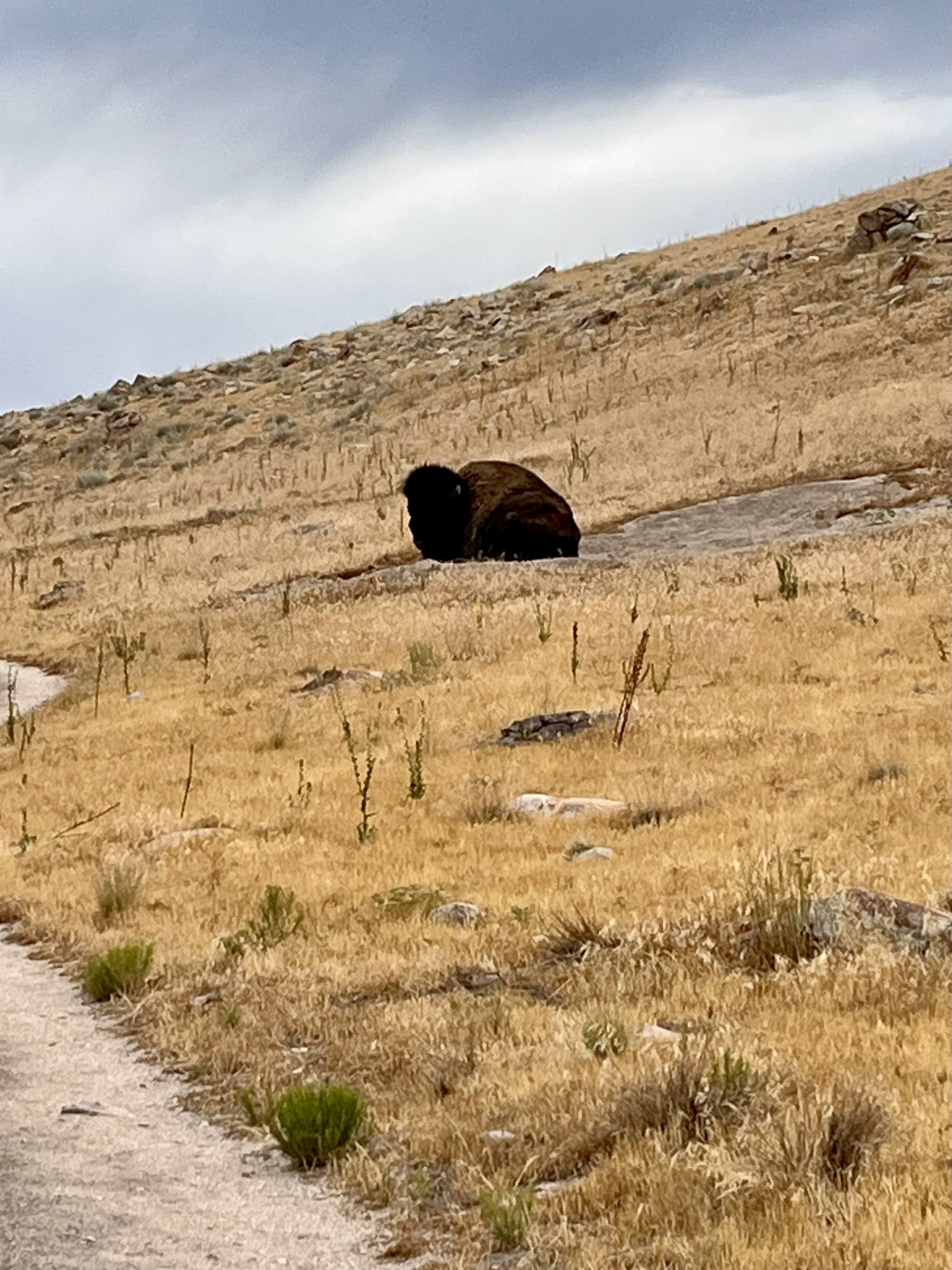
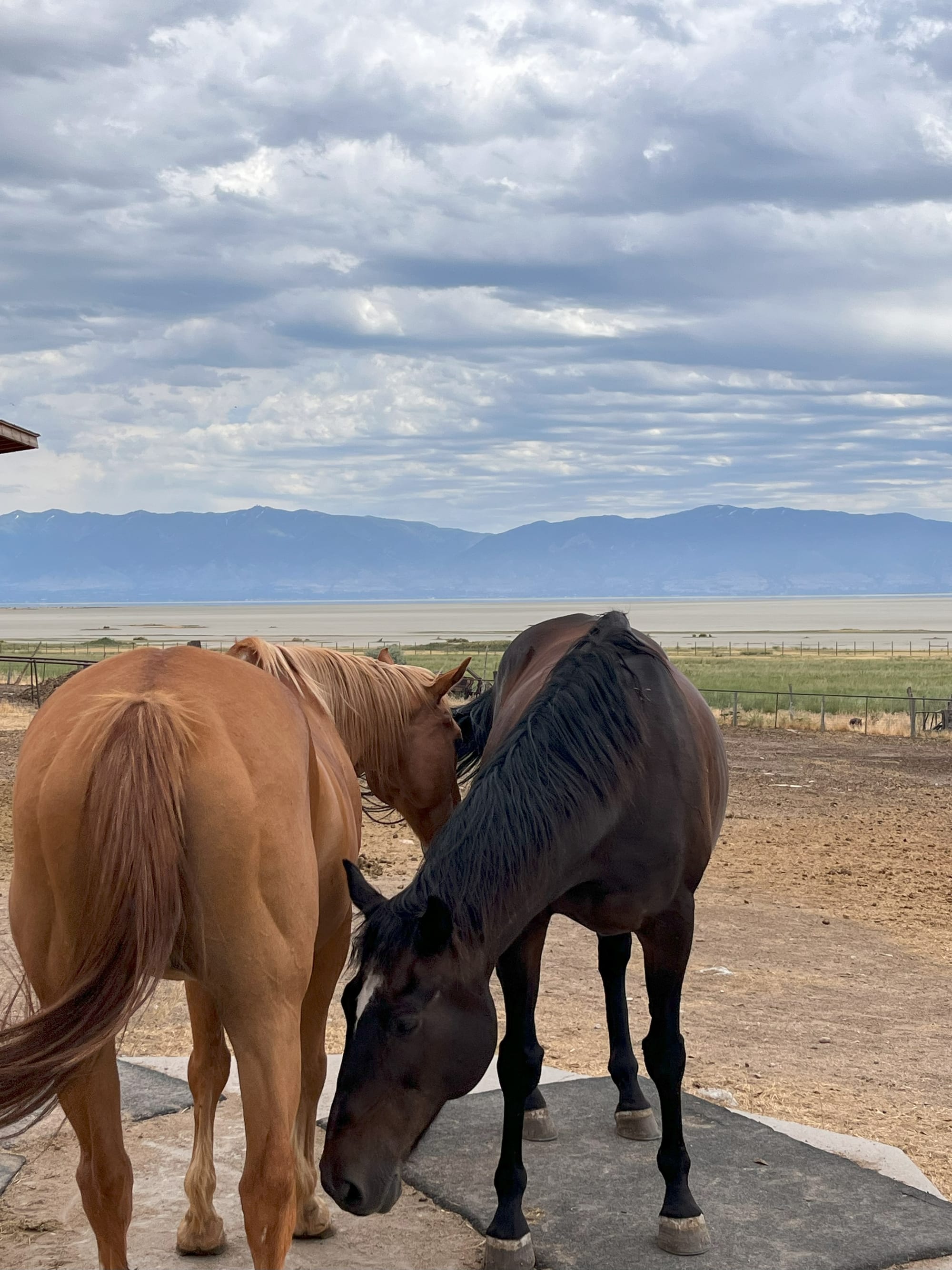
You can get close to the bison sculpture at Antelope Island State Park Visitor's Center, but keep your distance from the real bison you might meet hiking its trails, unless you're one of the pros who ride horses to herd them. © Laura Pevehouse



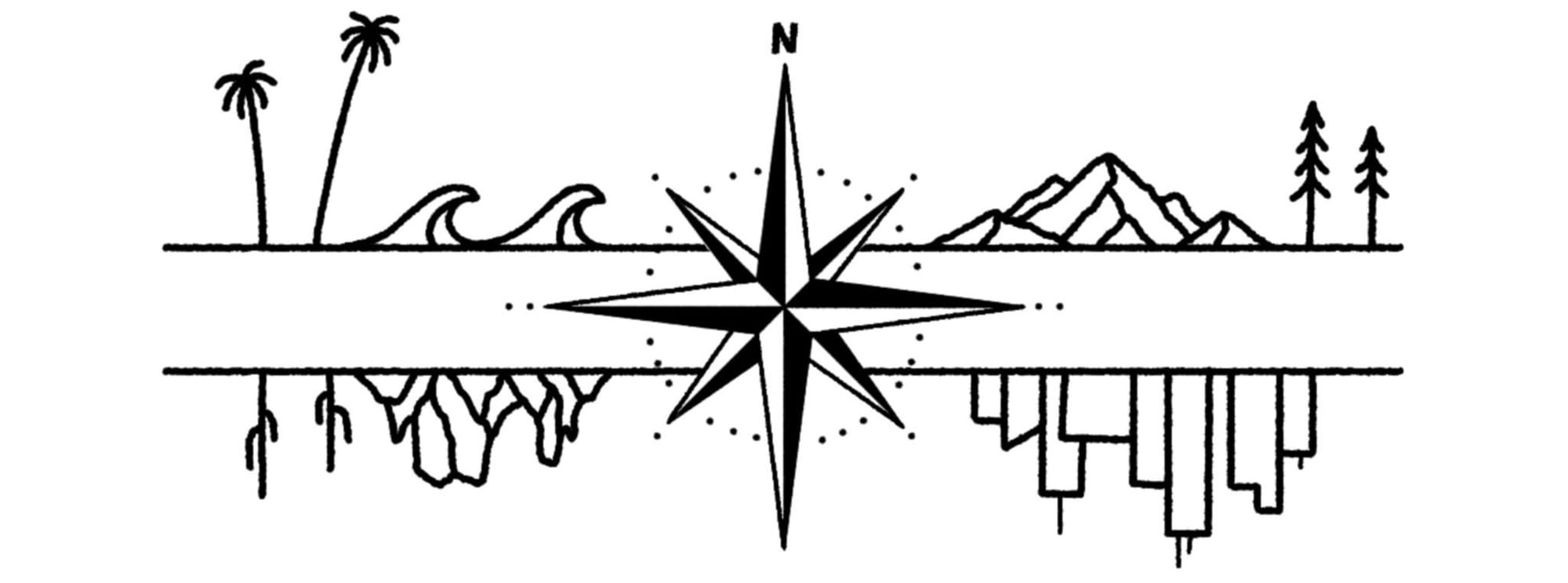
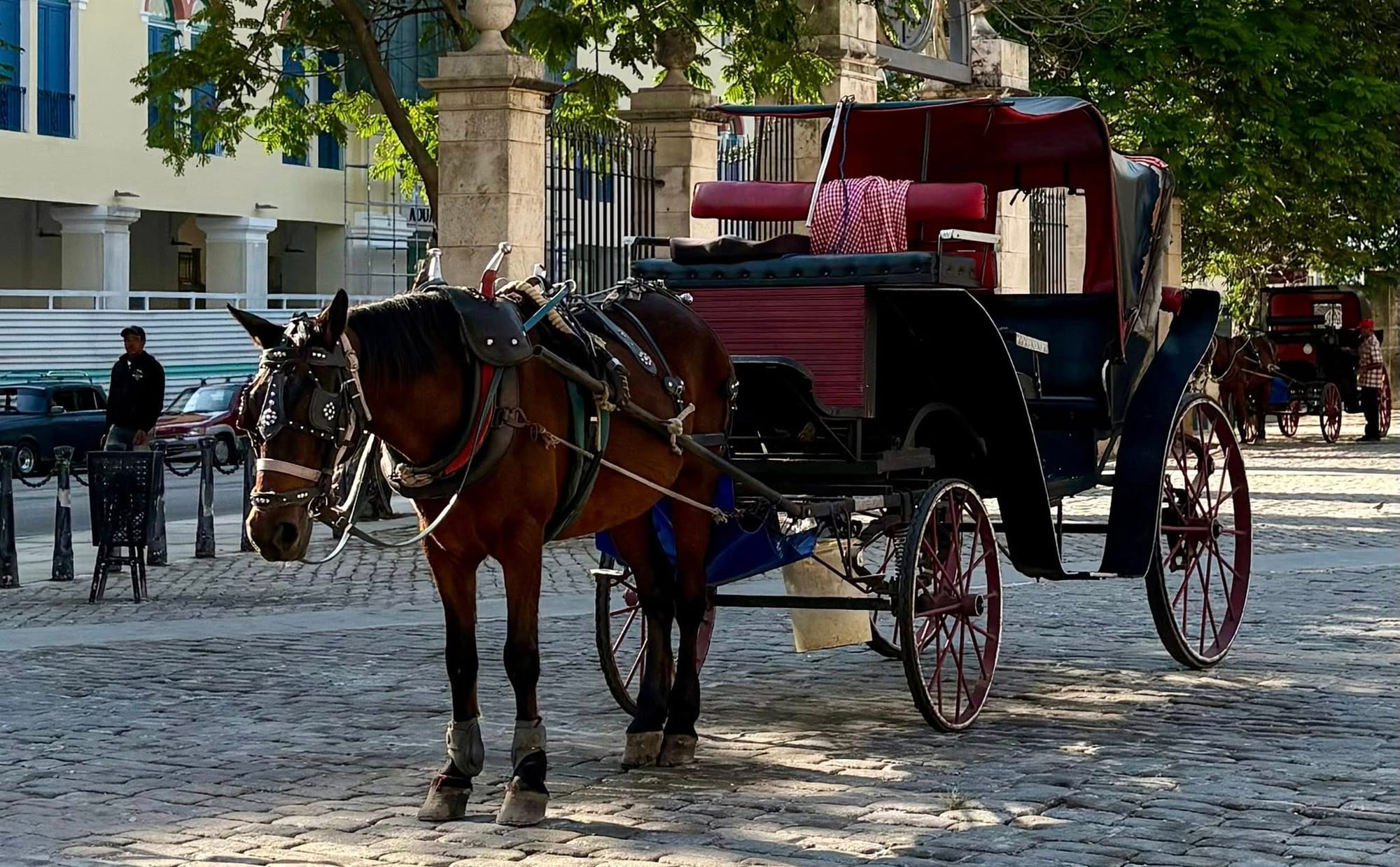

Comments